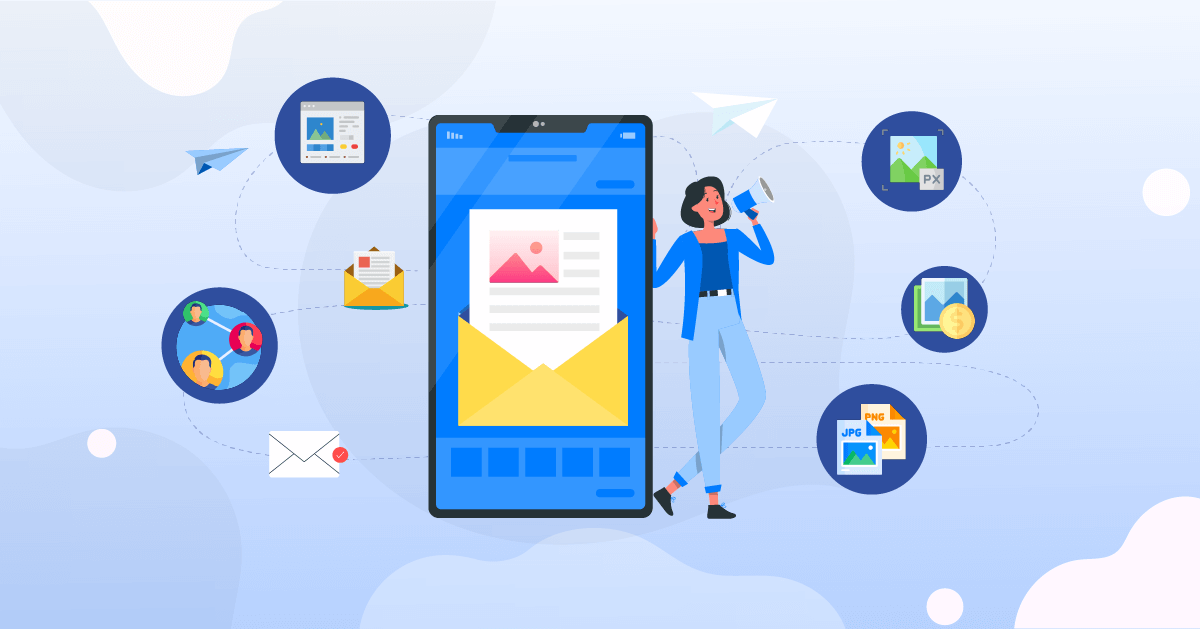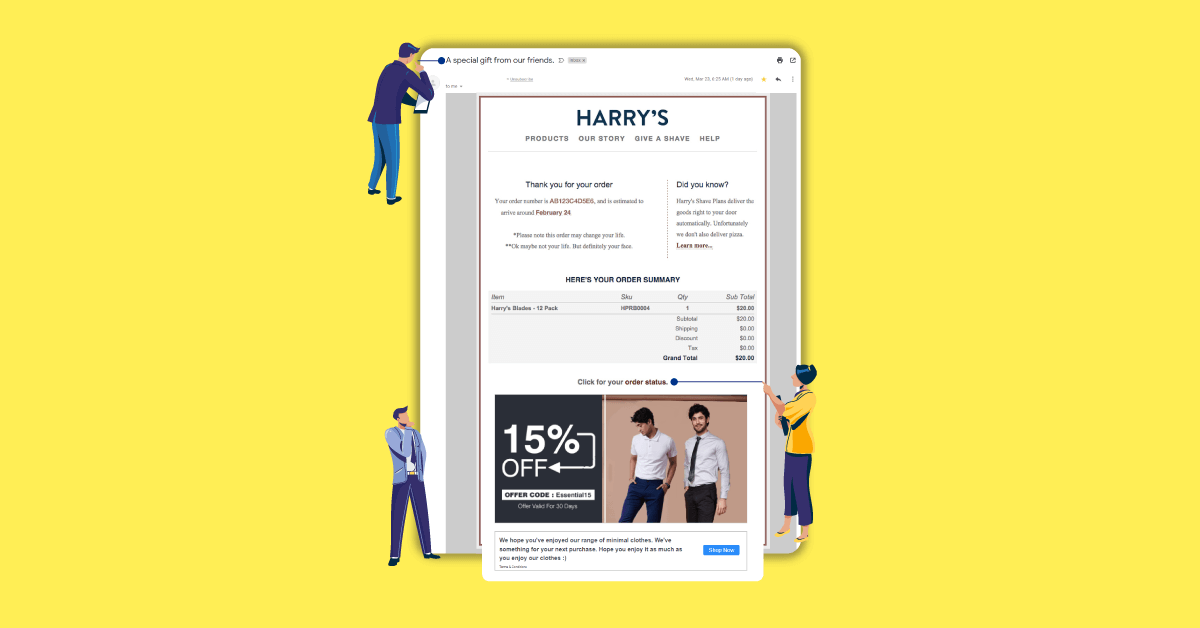A good way for organizations of all sizes to reach out to their current and new audiences is email marketing. Getting your audience to click and read emails is the most challenging aspect. To do this, you must envision your target audience and design communications tailored to them.
We all get inundated with numerous emails daily. Some are more essential than others. The goal is to persuade your readers that your email is one of the most vital ones. So, how do you go about doing that? With visuals, of course!
When it comes to capturing your audience’s attention, visuals are far more likely to do so than a long, boring block of text. However, you must know how to utilize images effectively to get the greatest impact.
In this blog, we’ll explain the most effective methods for incorporating images in your email marketing, offer design pointers, and teach you how to take your content to the next level. It will be a breeze for you to achieve your email marketing objectives with this thorough instruction guide.
Why Use Images in Email Marketing?
Visuals are effective in getting your message across to your readers. In fact, a study has shown that emails with images get almost twice the number of views as those without images. Apart from increasing views, visuals also have other benefits such as:
- They help stand out from clutter (i.e., they make you noticeable among the crowd).
- Customers respond better to visual information than just plain text. Only 6% of communication comes through words, 38% through tone, and 55% through body language, facial expression, and vocal cues.
- Including visuals gives your readers a more holistic view of what you want to convey… helping them better understand what you want them to do next (e.g., sign up and download an eBook)
5 tips to make Images in email marketing a success for your e-commerce brand
1. Leverage Stock Images
Stock images, when used correctly, can be a valuable marketing asset. However, there’s a right and wrong way to utilize stock photos; let’s talk about it.
If you’re using stock photos for your email marketing, make sure they’re royalty-free and that you’re following all copyright laws. Using copyrighted images without authorization might result in a lawsuit and cause serious harm to your brand’s reputation.
Look for images that are personal to you, and be picky about the ones you choose. Stock photographs may occasionally appear clichéd, with excessive light or overuse of filters. To make the most of them, look thoroughly for unique pictures that aren’t too common.
2. Ensure Correct Image File Size
We’ve already discussed that images in campaigns have more visual appeal and are generally more impactful and what types of photos are ideal for gaining attention. Now let’s discuss how to format and size your image for optimum results.
Large-sized pictures can slow down download speed and have an impact on user experience. If your email images take too long to load, the recipient is more likely to delete them and even consider them spam, particularly if they display broken pictures.
The height of the images in emails should ideally be kept to less than 200 pixels, while the width may range from 600 pixels to 1,200 pixels. However, before sending out your emails to clients, check them out on various devices to see how they look.
3. The Right Image Format is Crucial
Let’s get into it now that we’ve talked about image size. Choosing the right format for your email pictures is critical, but you may be unsure which one to use. Don’t worry- we’re here to assist!
You’re undoubtedly familiar with the concept of image formats. When uploading and downloading photos, you’ve most likely seen JPEG, PNG, and GIF options.
You might not be aware of the distinctions between these formats, even if you’re new to digital marketing. We know how overwhelming it may feel to learn everything there is to know about digital marketing. Let us break it down for you!
JPEG:
JPEG images have the lowest quality, followed by GIFs. However, they are highly compressed and take up the least amount of space in your emails. As a result, you’ll get better loading speeds and less of a chance of being blocked by spam filters with JPEG pictures.
PNG:
When it comes to logos, text-based images, and colorful photos, PNGs are ideal. They’re also fantastic for vibrant pictures and logos. Their greater color range, on the other hand, comes at the cost of slower load speeds.
GIF:
GIFs are a type of animated format that does not employ video. GIFs are a form of animated picture that doesn’t utilize video. Because most email clients don’t support videos, GIFs provide designers with a better opportunity to show their creativity. However, whereas JPEG and PNG contain many colors, the number of colors in GIFs is limited.
4. Don’t Forget the Alt Text
Text that appears as an attribute in HTML and translates to website visitors informing them what the picture represents is known as alt text (alternative text). This is particularly helpful for visually impaired users of your site.
This is a critical stage in utilizing pictures in your email marketing because it adheres to the ADA and guarantees that each person who receives your emails can comprehend the information.
It would help if you made certain that you provide an inclusive experience to all of your email subscribers by optimizing your emails so that everyone – including persons with visual impairments – can understand what your photo is about.
This is why alt text should be included in your photos. These little bits of text will also tell the audience what the image is about if the picture does not upload. Narrators on text narration software like this use alt text to describe photographs.
5. Use Real People in Images
See, it is all about building human connections through email marketing. And, of course, we’ve got some ideas on how to do that as well. If feasible, include photos of actual people in your email marketing campaign. This helps to create a stronger bond and is more likely to pique readers’ interest.
There are a variety of organic techniques to accomplish this. You may take photographs behind the scenes of your team in action. People might be hesitant to participate, but if you use candid shots, you’ll be able to see people as they truly are.
You may also want to ask your consumers to submit photos of them using your products and services. Let them know that their photo might be included if they select one of the best. In your emails, highlight the finest ones to bring out the essence of your business.
Your Turn to Supercharge Email Marketing!
No matter how great an email campaign you create, it will likely be a mediocre success without automation.
Take your e-commerce growth to the next level with Wigzo today!













